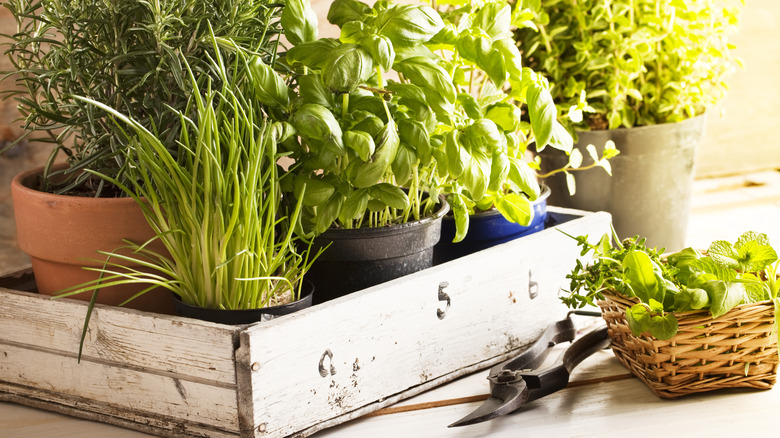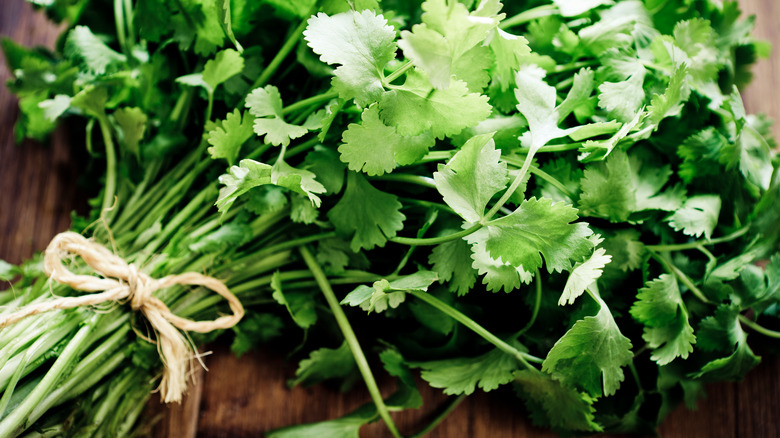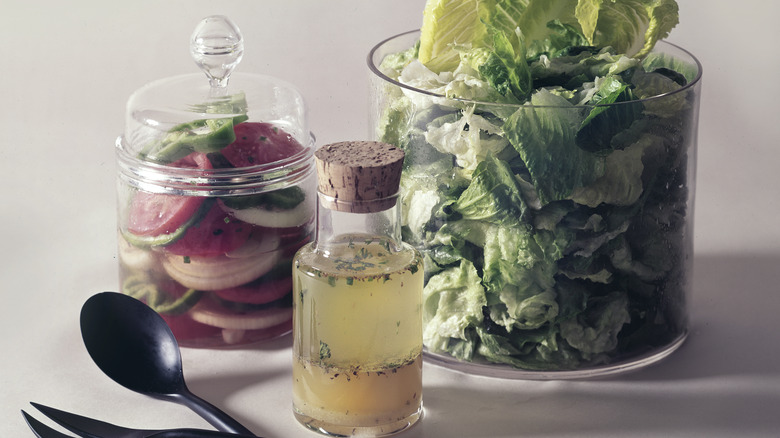Stash Leftover Herb Stems For The Best Homemade Salad Dressing
Fresh herbs can often be the difference between cooking something that feels like it came out of a restaurant, and something that feels like a broke college student slapped it together. Herbs like cilantro, parsley, basil, and dill add freshness, flavor, and nutrients to dishes, but a lot of the time, the majority of their potential goes untapped.
Bunches of herbs sold in the grocery store are often far larger than what a recipe would call for, and their fragile nature means that they can quickly go from perky and delicious to wilted and browning. But preserving herbs is easy, and you can use a lot more of them than you might think. Despite recipe instructions to trash your herb stems, there are plenty of uses for the parts of herbs that normally wind up in the compost bin.
If you don't want your herb stems to go to waste, save them to use in the best homemade salad dressing you'll ever make.
Which herbs to use in salad dressing
Herb stems are full of flavor, and usually slightly milder than the leaves, but still delicious. The best herb stems to save come from tender herbs like parsley, cilantro, basil, and dill, whose stems are bright green and bend to the touch. Mint stems can be used as well, but only the green parts closest to the leaf since the rest of the stems tend to get woody. The same logic can be applied to both tarragon and sage.
In general, herb stems get more fibrous and bitter the farther down they go, so if you're not sure if your stems can be saved, take a bite and see if you're able to chew them. If they're too tough, then your stems are unfortunately trash-bound. Though they can also be used for smoking or skewering meat as a flavoring agent, soaked in vinegar and strained out, or fried in oil to create a fragrant flavored oil.
How to save herb stems
After separating your herb stems from their leaves and woody ends, chop them finely and add the stems to a mason jar filled with vinegar. The vinegar will both preserve the stems and release some of their flavors, producing a ready-to-go vinaigrette in about a day. Other acids like lemon juice achieve the same effect. Then, simply add oil and any desired spices, and sprinkle your creation over a salad. If you used woody stems, you will want to filter these out before pouring them onto your salad.
You can also add your herb stems to a blender with a few other ingredients for a smoother salad dressing. Blend parsley stems with ricotta, lemon zest, lemon juice, and olive oil for a rich and cooling salad dressing. Or add it to oregano, red pepper flakes, olive oil, and vinegar for a poor man's chimichurri. For basil, try some Dijon mustard, a bit of honey, and a smidge of vinegar. And dill stems pair deliciously with Greek yogurt and lemon juice for a tangy, creamy salad dressing.



